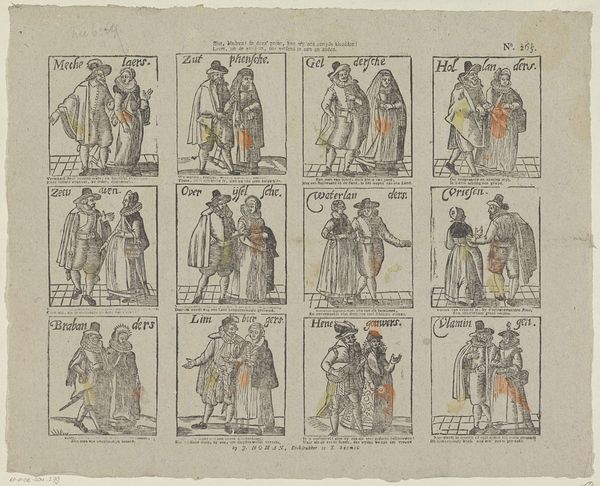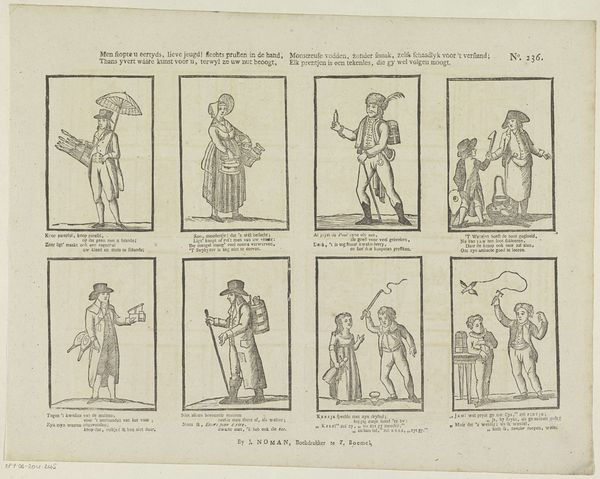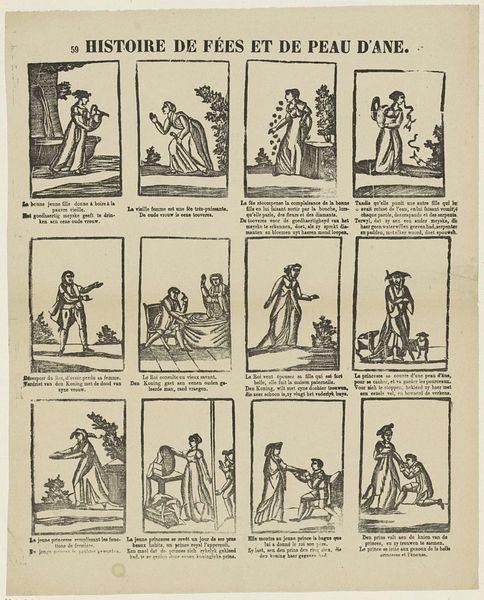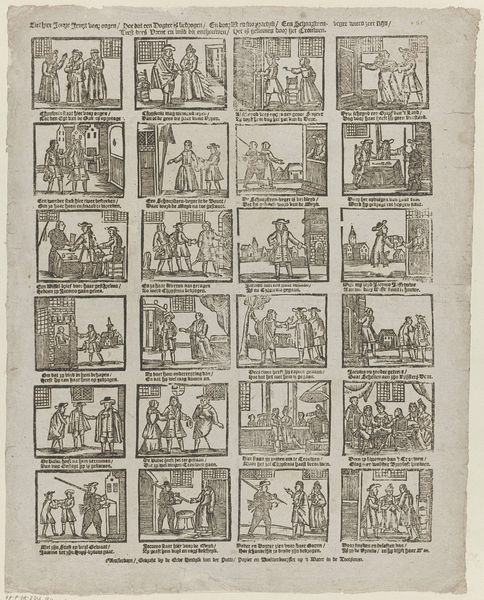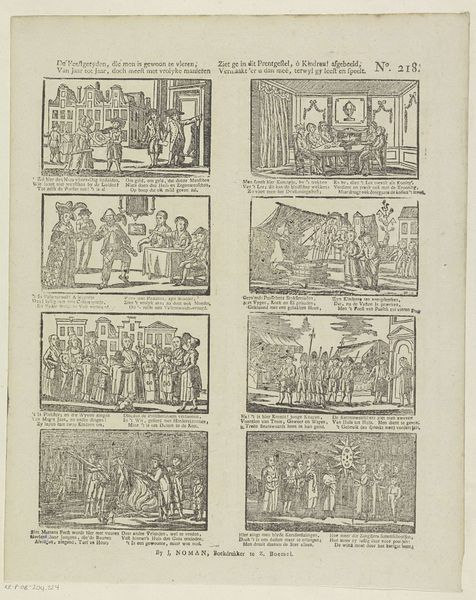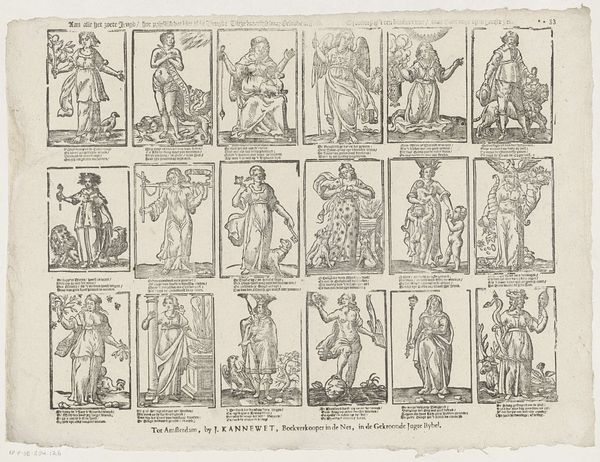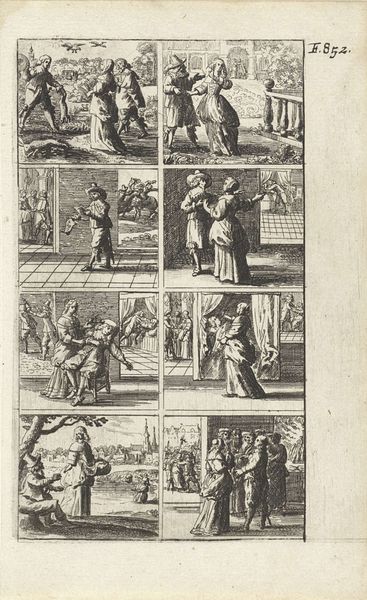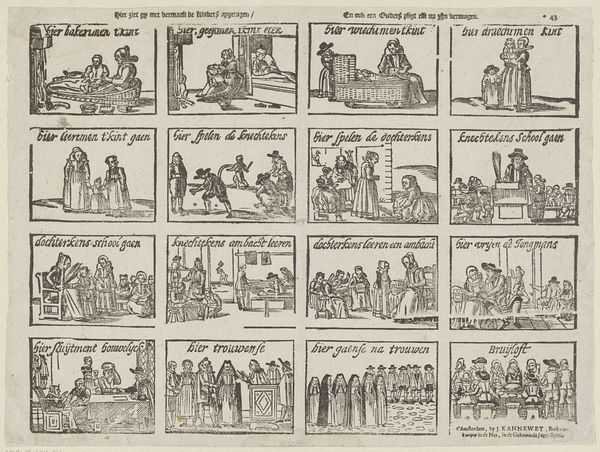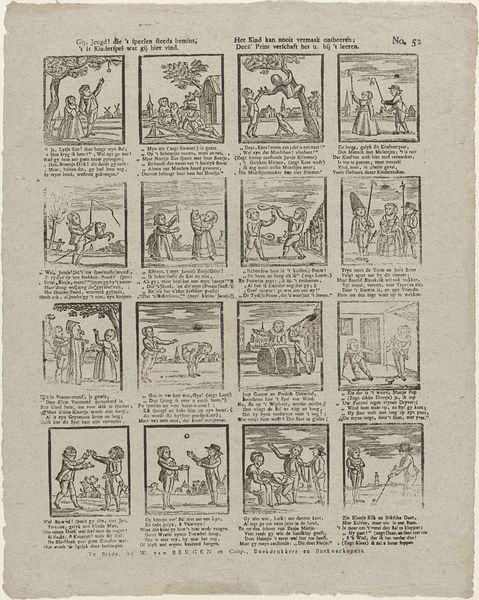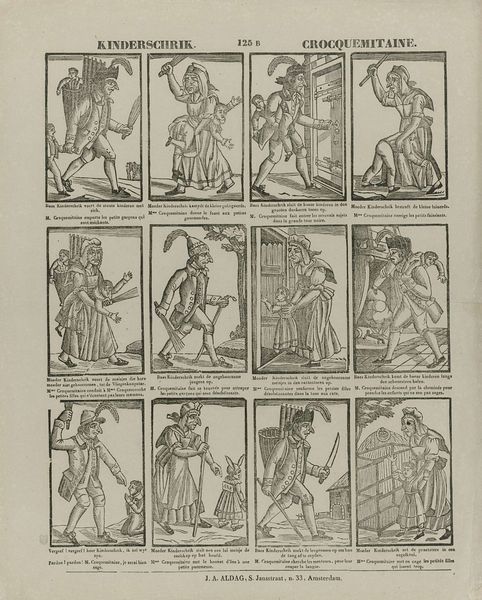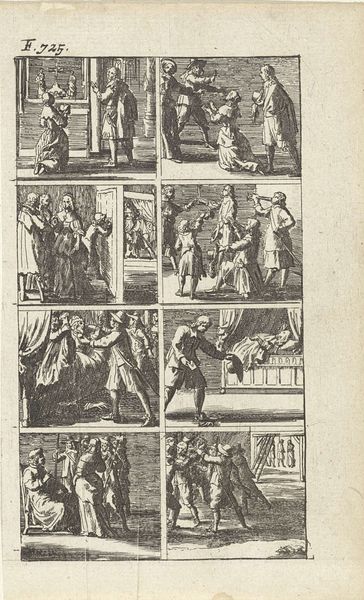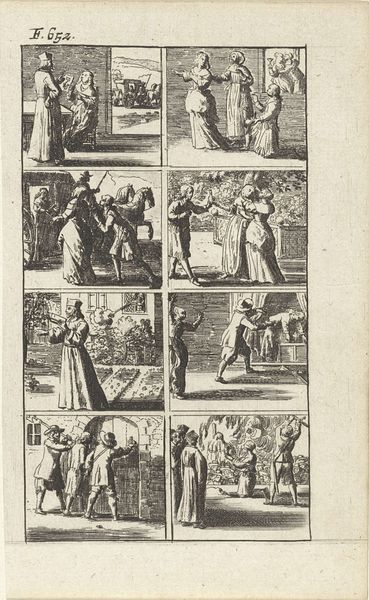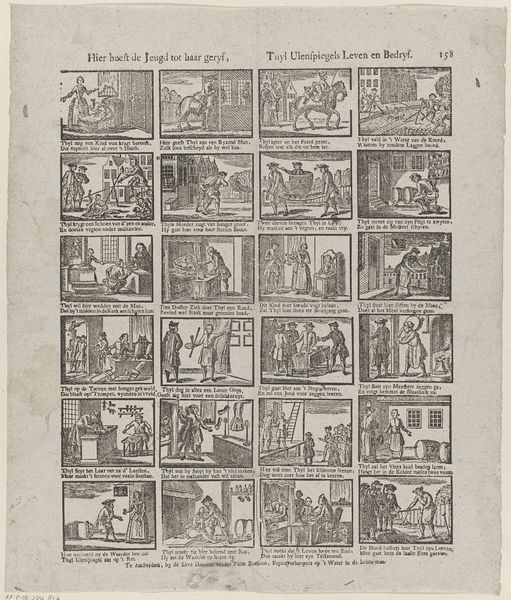
Ziet, kindren! in deez' prent, hoe wy ons eertyds kleedden: / Leert, uit de versjens, ons verschil in aart en zeden 1715 - 1813
0:00
0:00
ervenweduwecornelisstichter
Rijksmuseum
print, engraving
#
narrative-art
#
dutch-golden-age
# print
#
figuration
#
genre-painting
#
engraving
Dimensions: height 313 mm, width 404 mm
Copyright: Rijks Museum: Open Domain
Editor: This engraving from between 1715 and 1813, titled "Ziet, kindren! in deez' prent, hoe wy ons eertyds kleedden: / Leert, uit de versjens, ons verschil in aart en zeden", which roughly translates to "Look, children! in this print, how we used to dress: Learn, from the verses, our differences in nature and customs", is interesting. It shows what appear to be different regional costumes. What strikes me is its almost sociological quality—it feels like an early attempt at documenting cultural identities. What do you see in this piece? Curator: I see a powerful intersection of fashion, identity, and social commentary, visualized through the seemingly simple medium of an engraving. Consider how clothing functions as a marker of identity, signifying not just geographical origin, but also potentially class, religious affiliation, and even political leanings in this era. Each panel presents a micro-narrative of identity, doesn't it? Editor: That's a good point, especially since some regions have changed hands over the centuries and certain styles became almost class-bound. But it almost feels like a catalogue; is there some deeper context here beyond just regional identity? Curator: I think we should look at the role of prints during this time. They were accessible forms of media, serving both educational and propagandistic functions. How might this print reinforce certain societal norms or biases about specific groups of people? Could it be read as an early form of cultural stereotyping? The poses of each pair could further inform a critical reading, wouldn’t you agree? Editor: I never thought about the poses themselves having that much meaning! Viewing it now, I realize how nuanced this seemingly straightforward print is, how it serves as both a document of material culture and as a potential reflection of existing social attitudes. Curator: Precisely. It pushes us to question the representation of cultural differences and the potential for those representations to perpetuate biases.
Comments
No comments
Be the first to comment and join the conversation on the ultimate creative platform.
